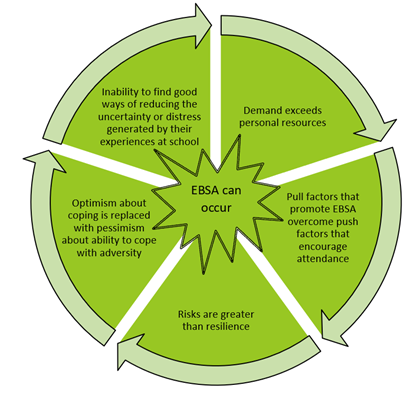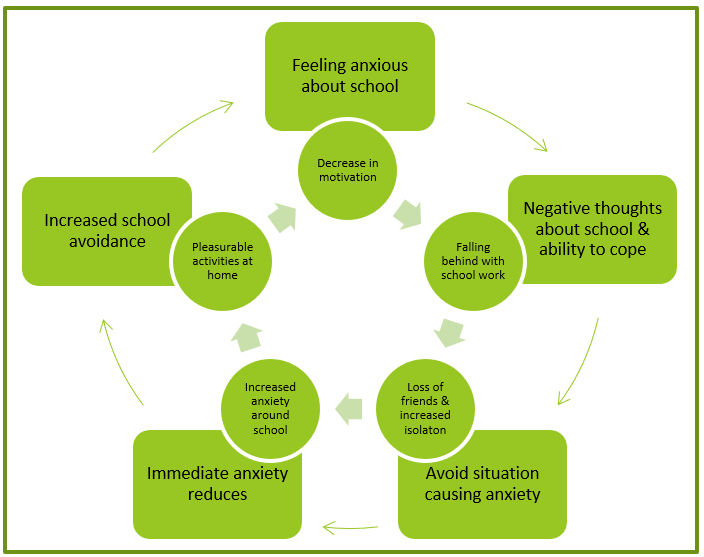Push and pull factors
The contributing factors of risk and resilience can also be separated into push and pull factors. EBSA is most likely to occur when the risks overwhelm the resilience, and when the pull factors that encourage school avoidance take over the push factors that encourage school attendance.
Push factor - What is pushing the child away from school?
For example, a child or young person may be struggling with transition, difficulties adjusting to a new environment, difficult relationships with staff, difficulties accessing the learning, or no friends.
Pull factor - What is pulling the child towards home?
They may also wish to be at home to look after a parent with a long-term health condition.
With each individual situation, it is therefore crucial to fully explore and understand why the child or young person is reluctant to attend school.
- to avoid uncomfortable feelings brought on by school: for example, anxiety, low mood, feelings of disconnection or not belonging.
- to avoid stressful situations: for example, academic demands, exams or evaluations, challenging social pressures and interactions, unstructured times, aspects of school environment such as noise, crowds, buildings, classrooms, transitions.
- to reduce separation anxiety or gain attention from significant others:for example, time at home with parents, carers or family members.
- to engage in preferred activities: for example, watching TV, playing computer games, spending time with friends, going shopping.
EBSA is often associated with feelings of anxiety in children and young people. Think of anxiety as the brain's alarm system being overly sensitive (i.e., very sensitive to ‘breaking news’). It's constantly guessing that something bad might happen, even when there's no real danger. It's like your body sending a red alert that something is not right, but you're not exactly sure what the problem is. This could make a child or young person feel worried, nervous, or scared more frequently than usual. It's like their brain is seeing shadows in the dark and interpreting them as monsters, even though they are safe in their bedroom.
For children and young people who are going through this, these feelings might be so strong and unpleasant that they start to worry about how to make them less intense. Just like how you might feel nervous before a big test or game, it's normal for everyone to feel anxious or unsure at times. But for children and young people who struggle going to school because of their anxiety or experience of ‘error’, these feelings are not just a little bit nervous or unsure – they are very intense and uncomfortable and frequently uncontrollable.
Some children and young people experience such heightened levels of anxiety that it negatively impacts on their ability to attend and cope in school. Children and young people's avoidance of school reflects an attempt to preserve emotional security by shielding themselves from the stress, threats or social isolation they feel at school. Their avoidance may increase the certainty of feeling better away from stress and reduce the uncertainty about dealing with challenges at school. However, it also makes it increasingly difficult to return because it strengthens their beliefs about experiencing unpleasant feelings, which cause much distress and limits the opportunities to gradually overcome their difficulties. Moreover, the social network weakens, the academic gaps grow, and the fear of returning to school takes over. The complex context of school feels less and less psychologically safe and predictable as a result.
Anxiety may be the triggering, but also a maintaining factor of EBSA. The greater the avoidance of situations that cause fear or distress, the more difficult it will become to deal with it.


